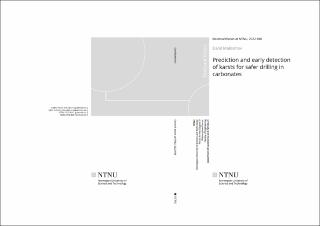| dc.description.abstract | Underestimation of drilling hazards in carbonates can lead to serious consequences to personnel and the environment. The history of drilling in carbonates has shown that the vast majority of drilling incidents are associated with drilling through unique carbonate features called karsts. Karsts come in a variety of sizes and shapes such as cavities, caves and underground channels. Accidents associated with drilling through karsts can result in the loss of well control with subsequent problems. This can lead not only to operational delays or damage to expensive drilling equipment, and also to possible personnel injuries, loss of life or environmental catastrophes. This thesis studies different strategies, methods and technologies for safer drilling in karstified carbonates.
It presents a general theoretical background of karstification phenomena and provides a description and classification of various karstification objects relevant for drilling. This classification enables the identification of important parameters of dangerous for drilling karsts. The obtained description and classification leads to a review of available technologies and methods that can be utilized for prediction or detection of dangerous for drilling karsts. This analysis reveals the gap in the available technologies for early detection of dangerous for drilling karsts. Based on in-depth analysis of an entire field in the Barents Sea, it is shown that karsts tend to appear in groups. This finding is utilized in a novel approach, where the not dangerous for drilling karst can be utilized as indicators of karstification zones. The analysis of the extensive set of field data, demonstrates that karstification objects can be detected from the analysis of certain patterns in real-time drilling data. These patterns serve as real-time indicators of karstification objects and zones. However these patterns often remain unforeseen during drilling. This work provides and tests a signal processing algorithm for automated karst-patterns detection. That can help engineers involved in real-time drilling data analysis to detect karst-related patterns in drilling data. Finally, a novel method for prediction of karsts while drilling using look-ahead of the drill bit technology is proposed based on borehole acoustic tool. The developed technology can be used to indicate upcoming drilling hazards associated with karsts or any other unexpected formation changes. The concept of this technology is demonstrated through experiments in a state-of-the-art industrial simulator | en_US |
